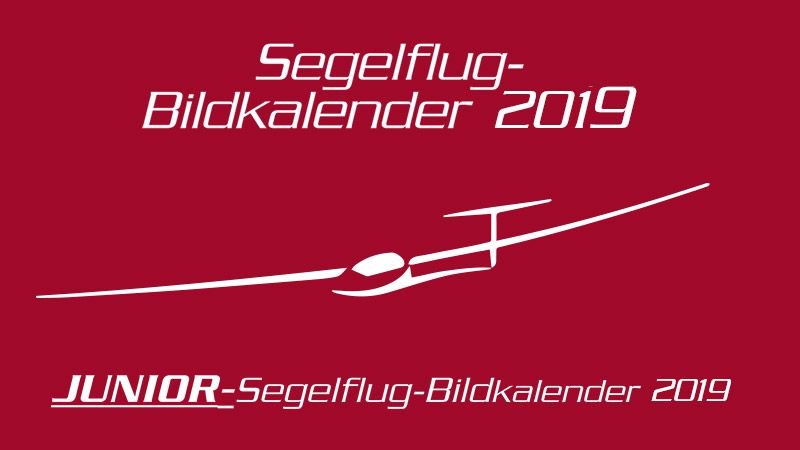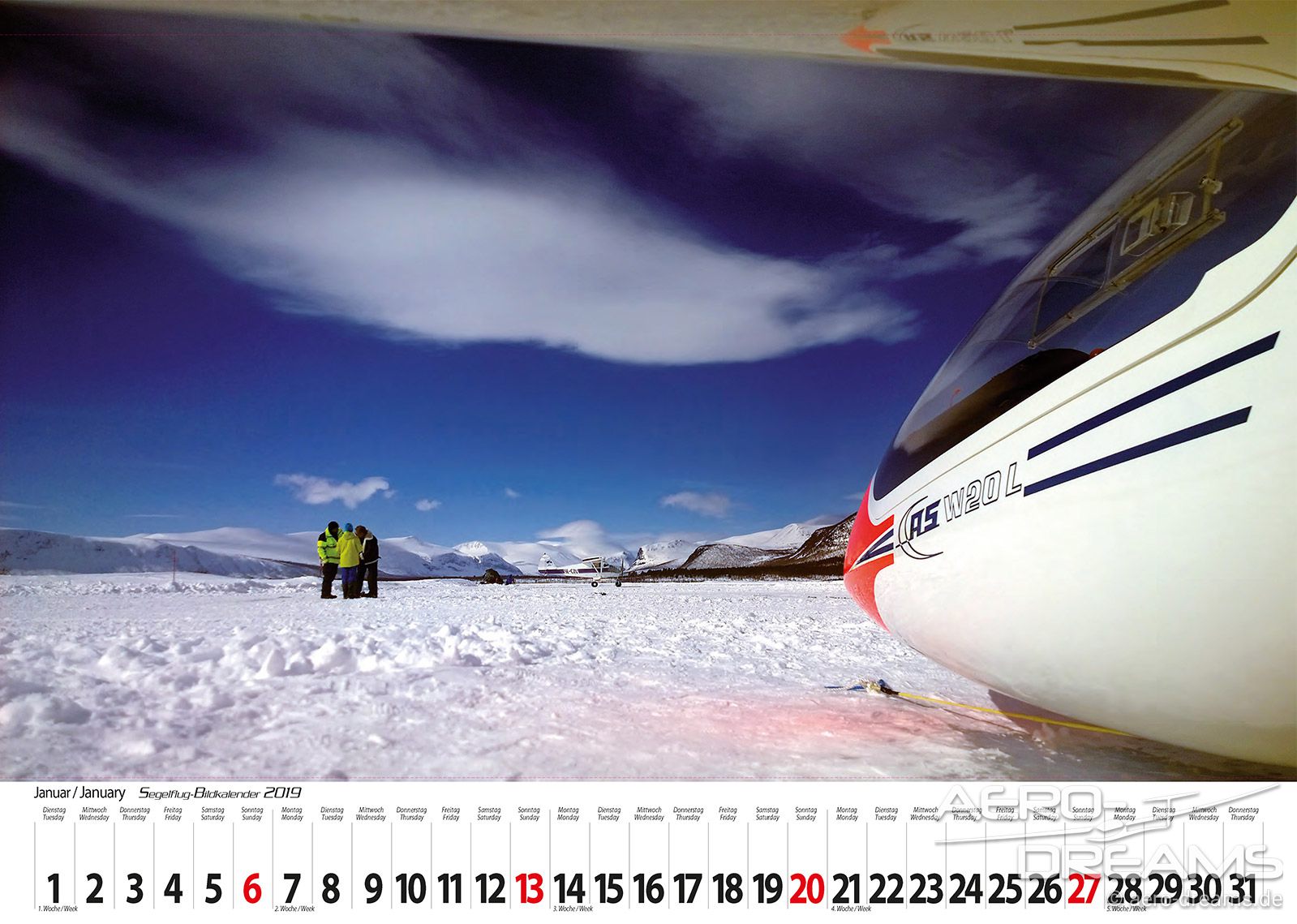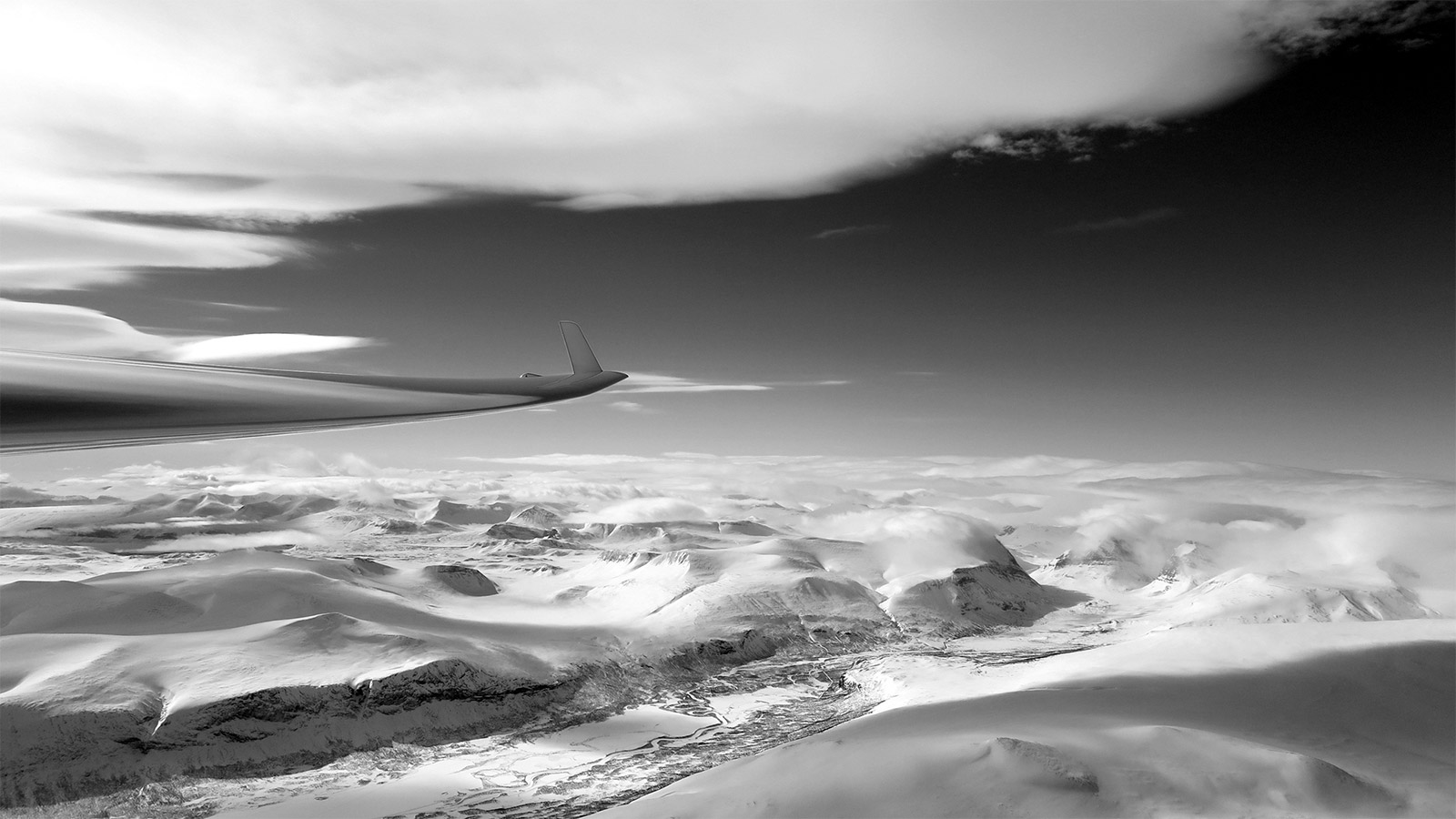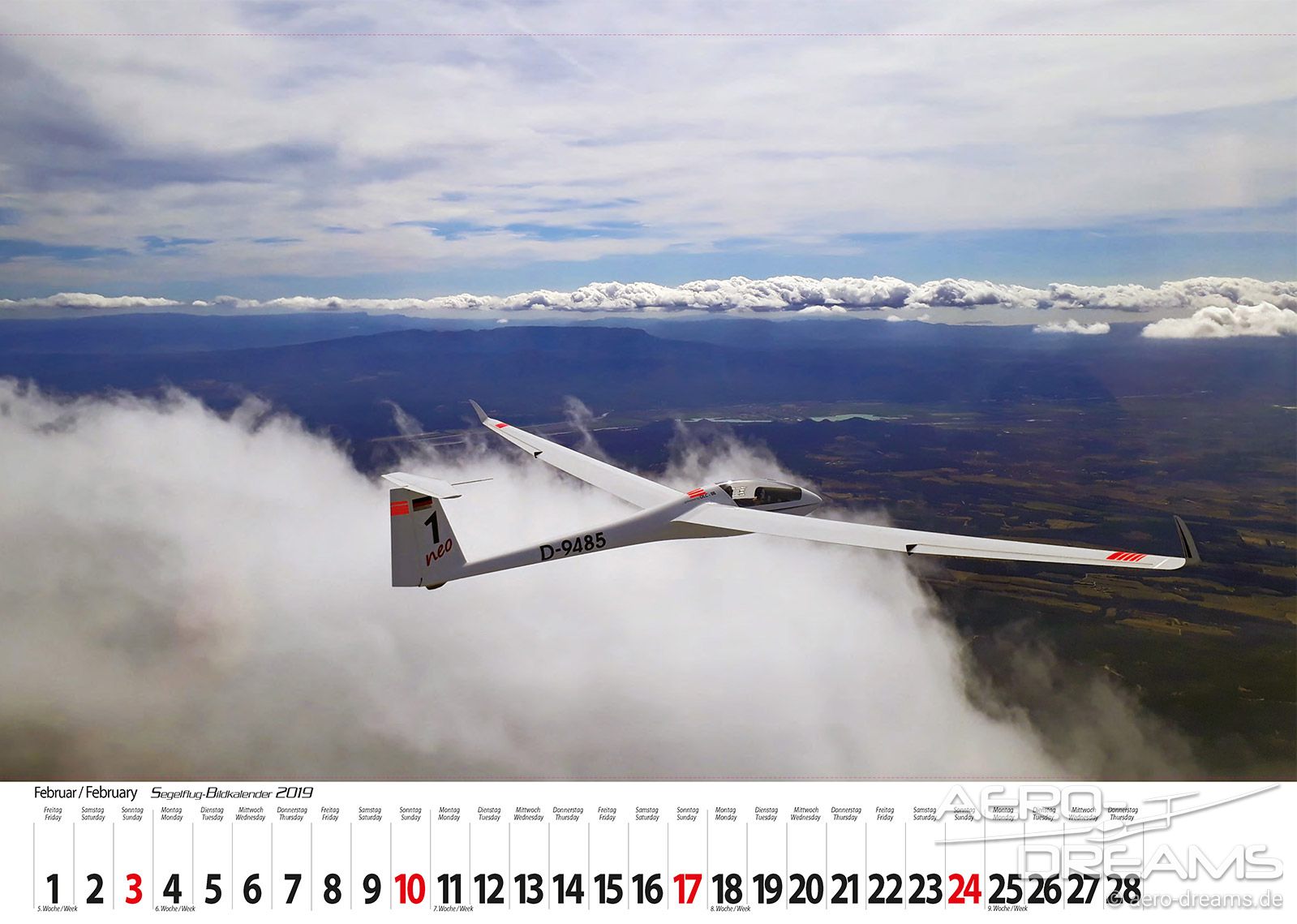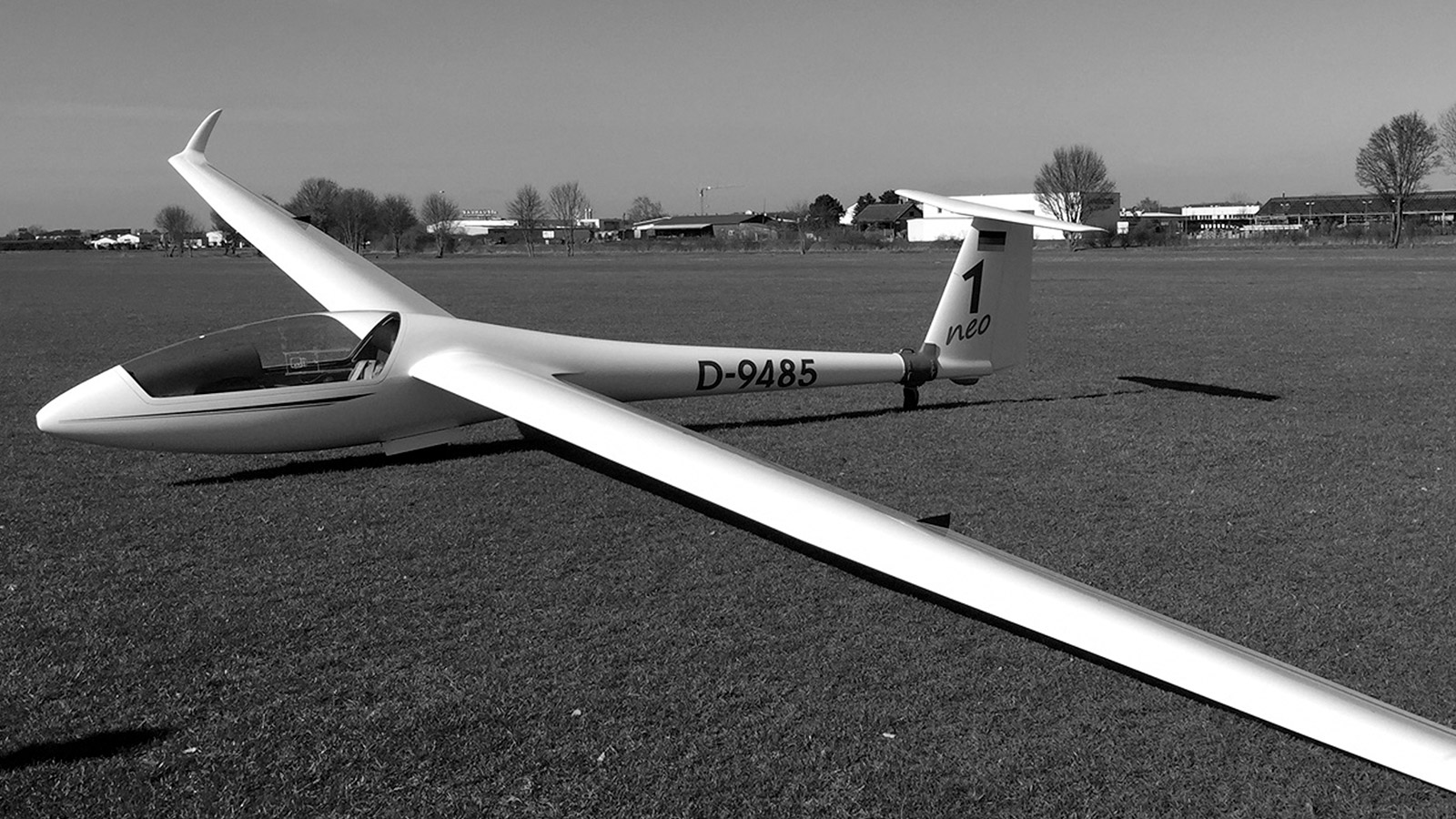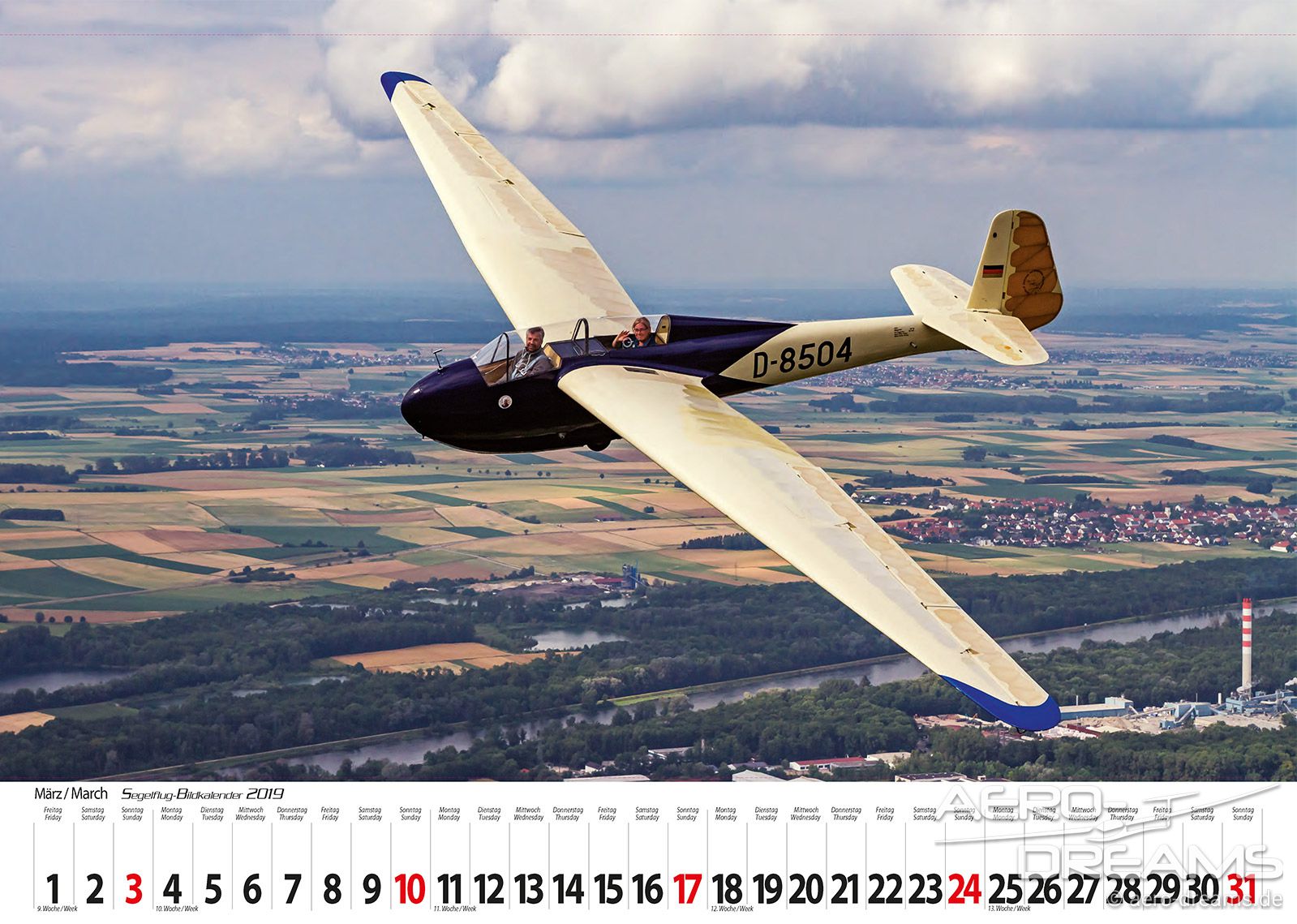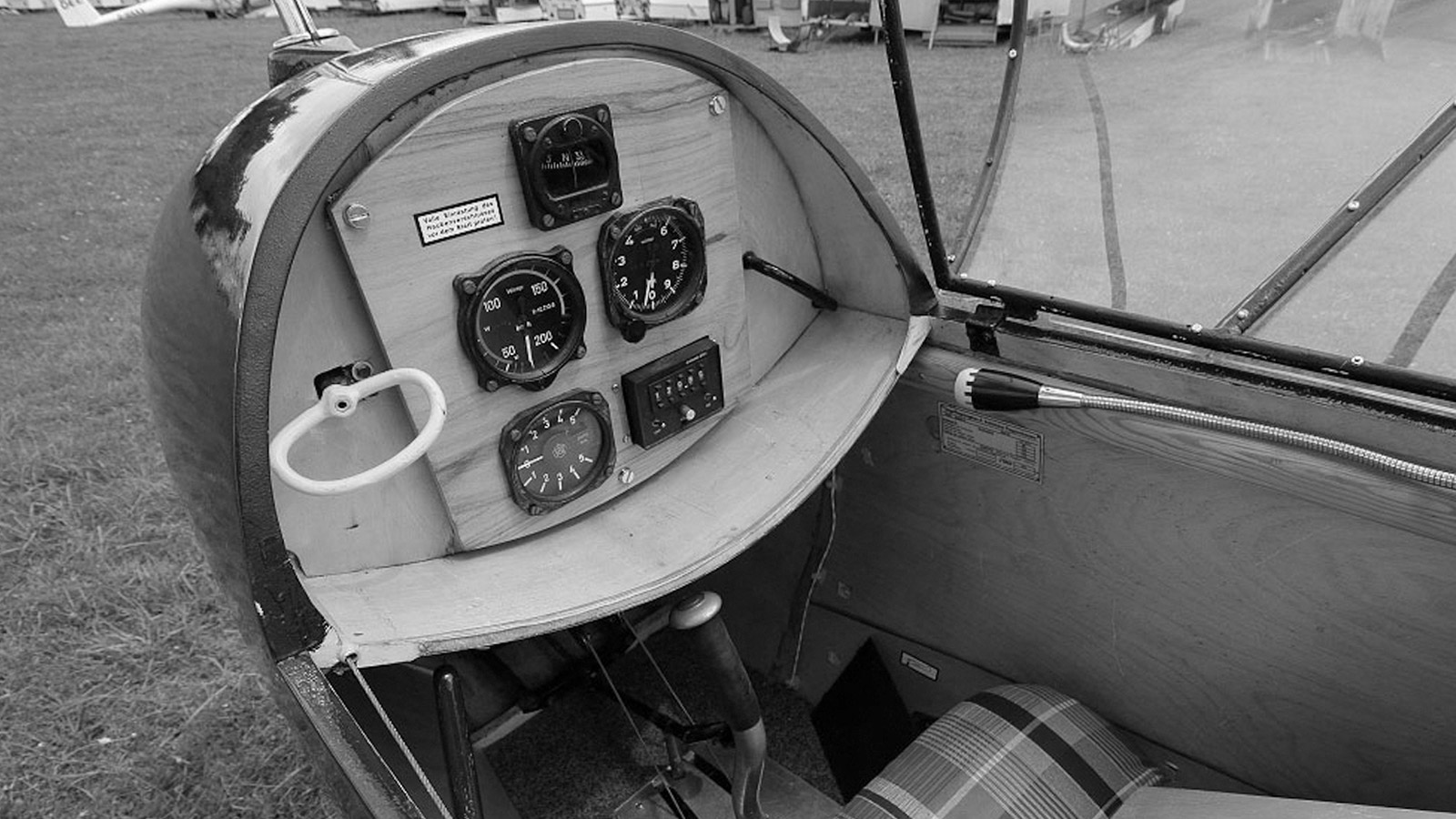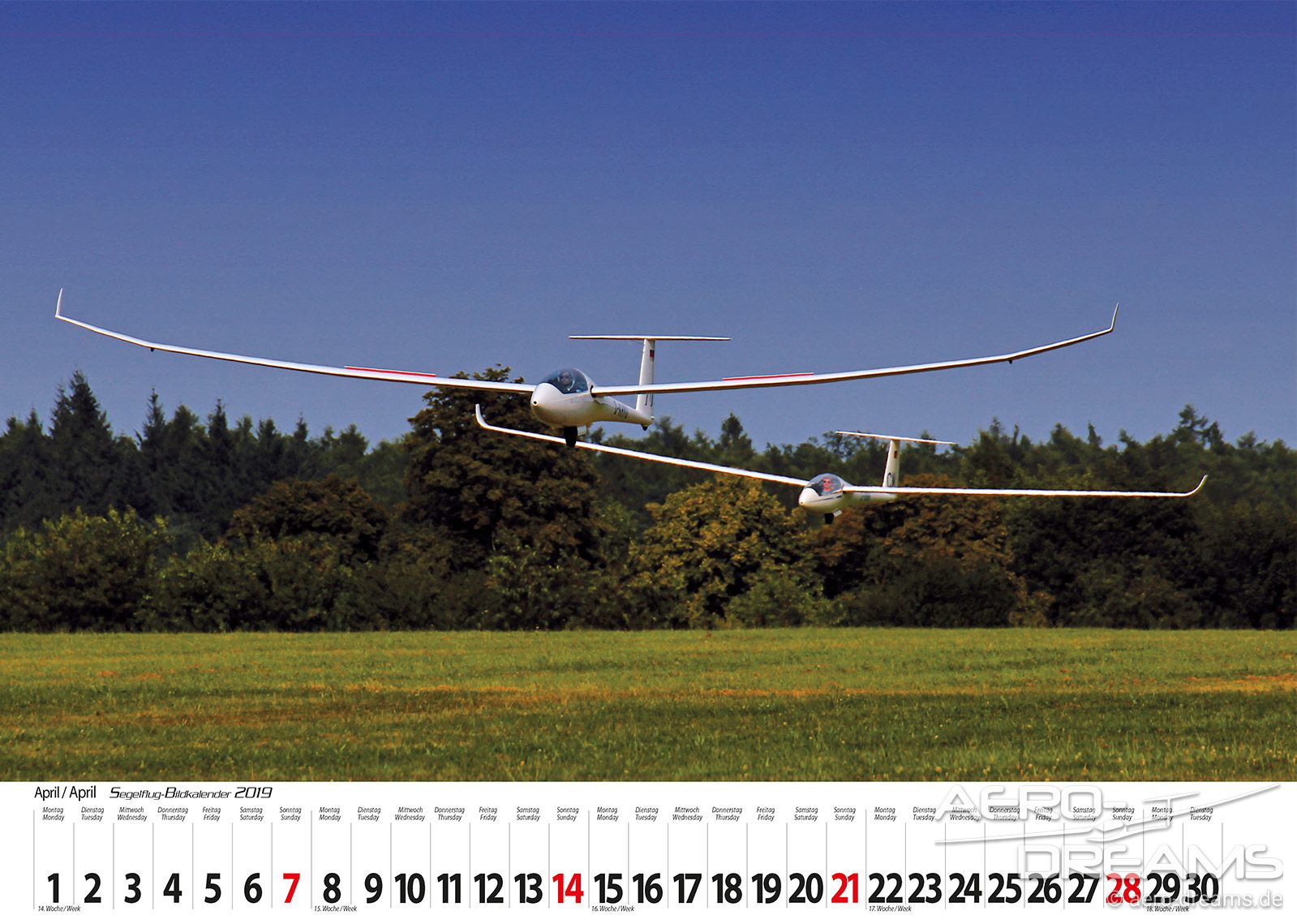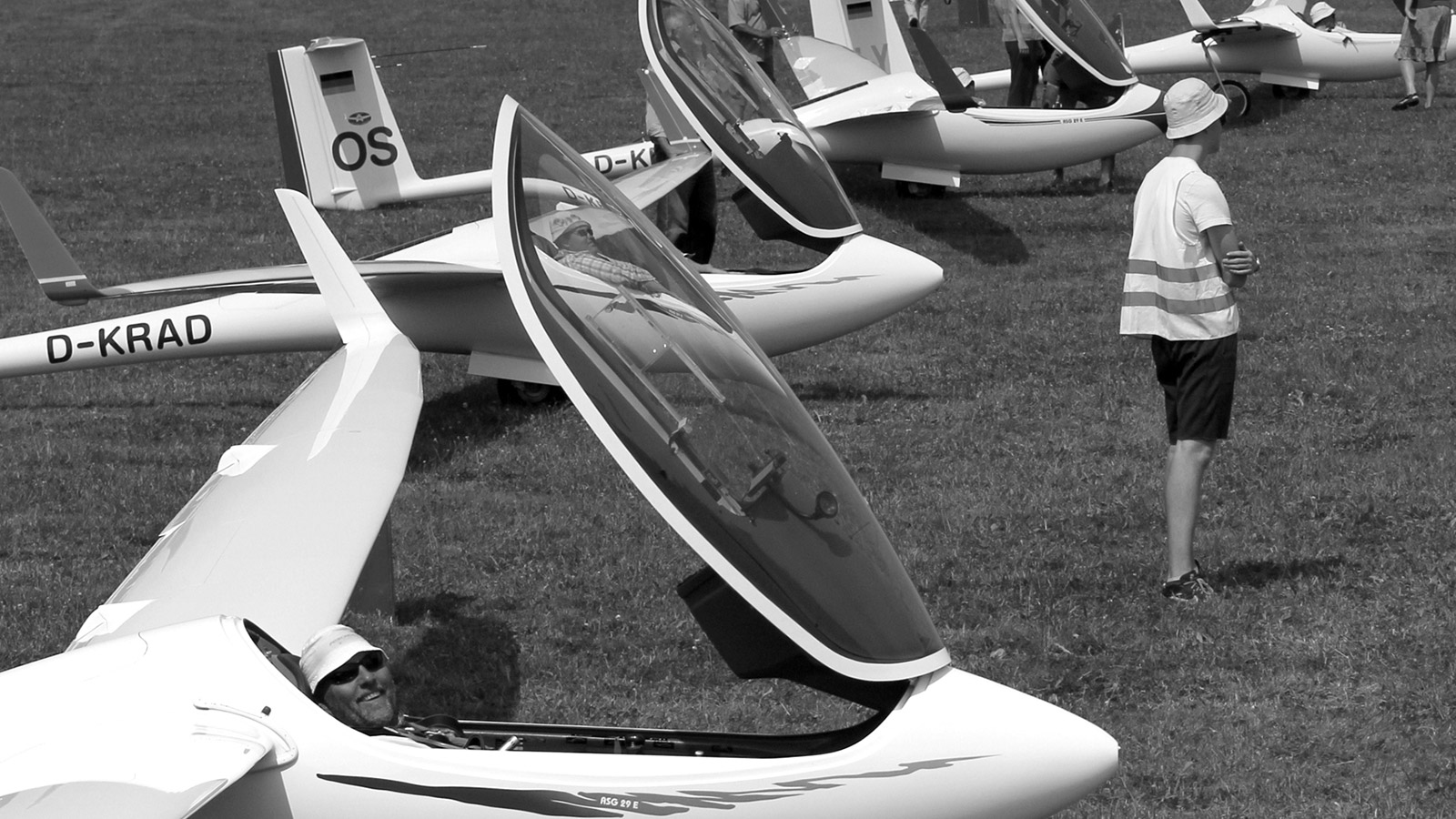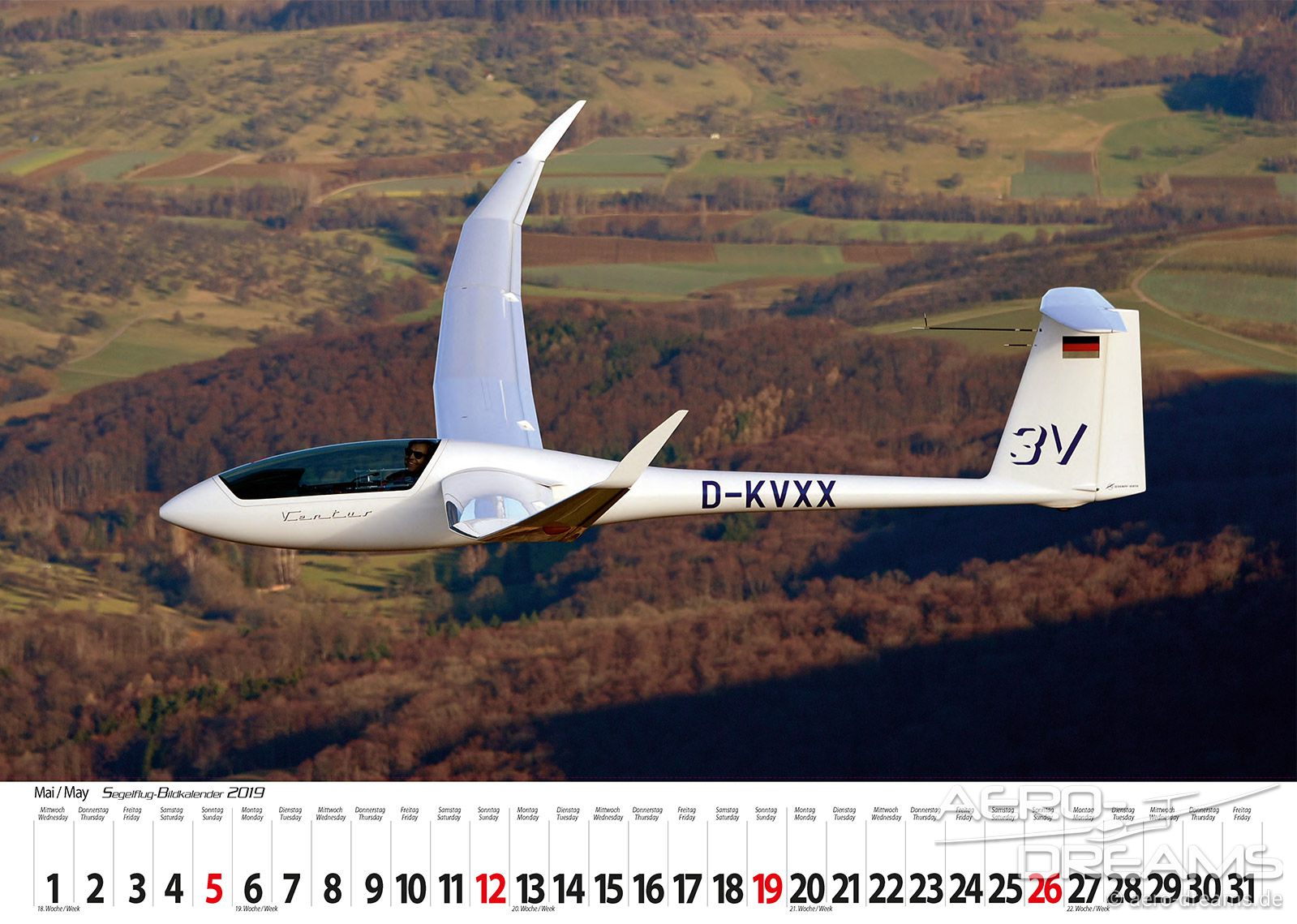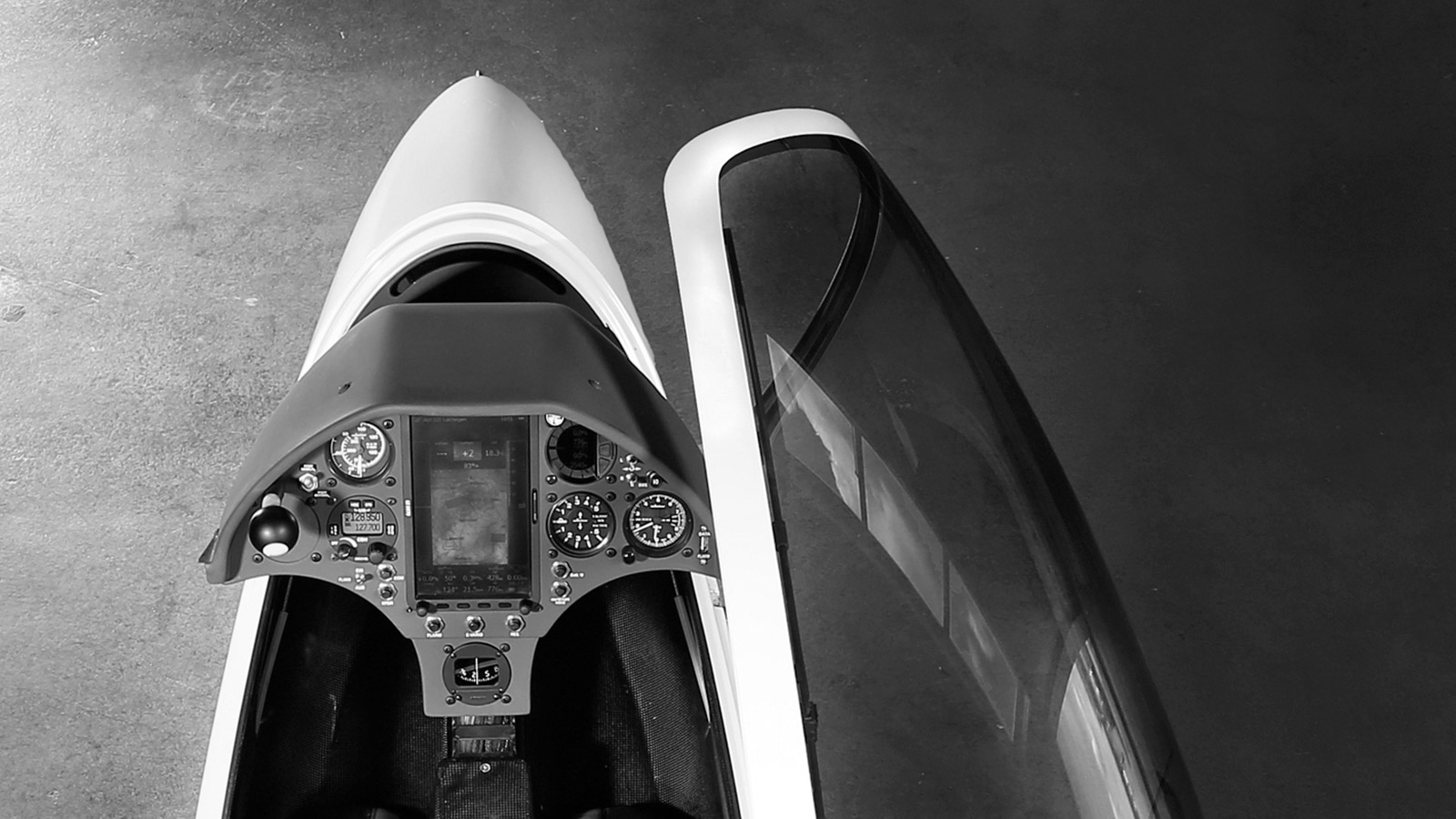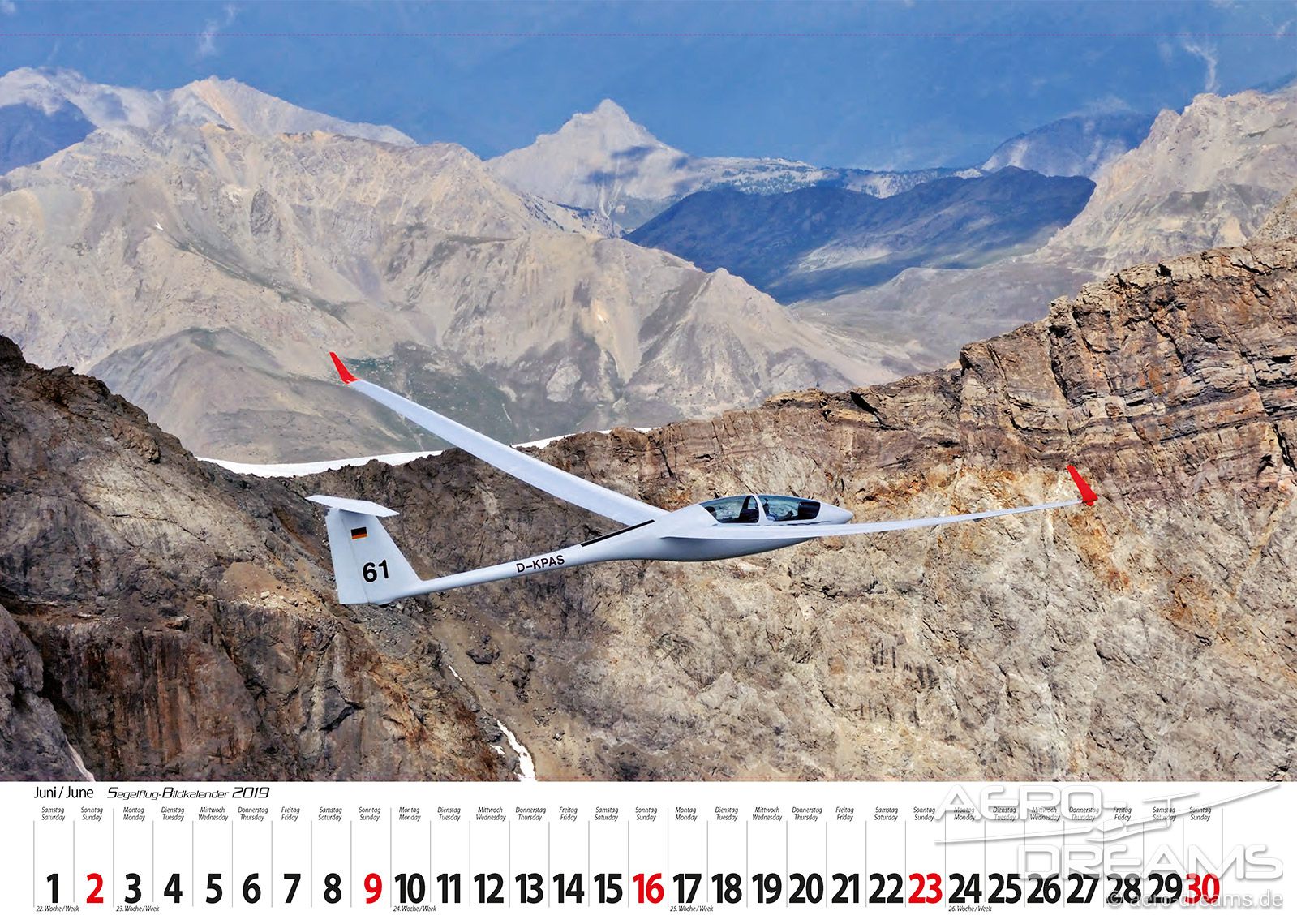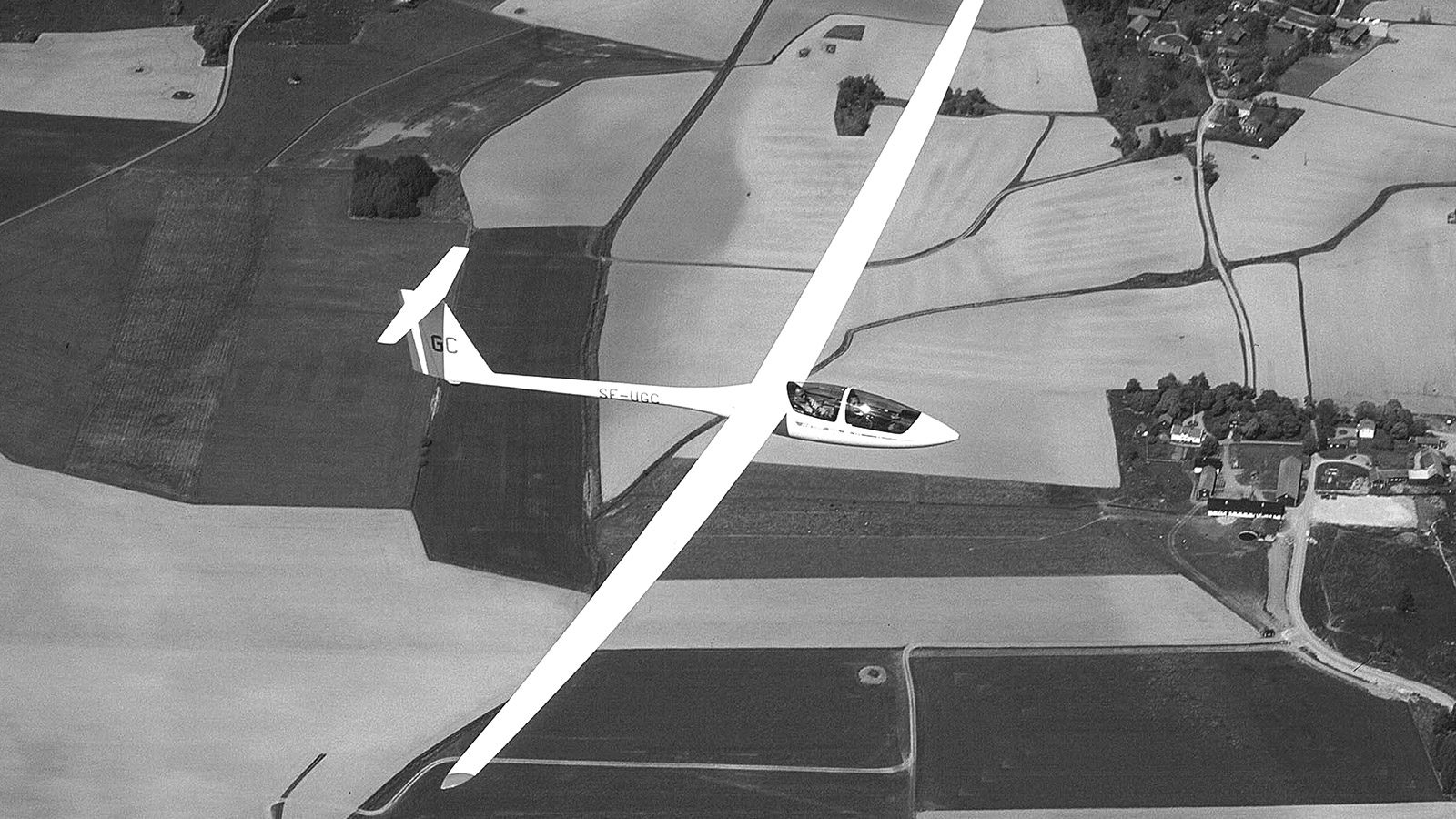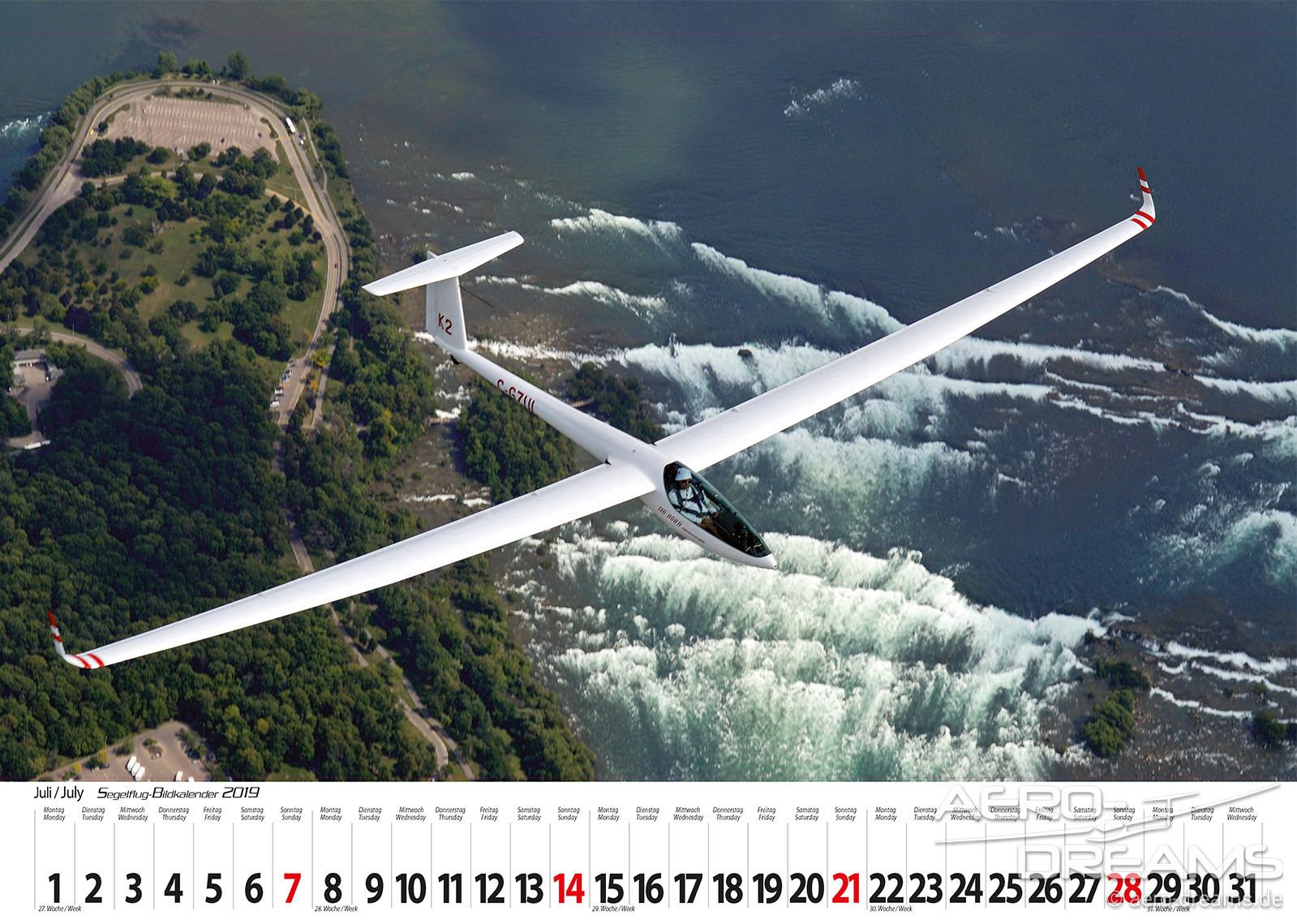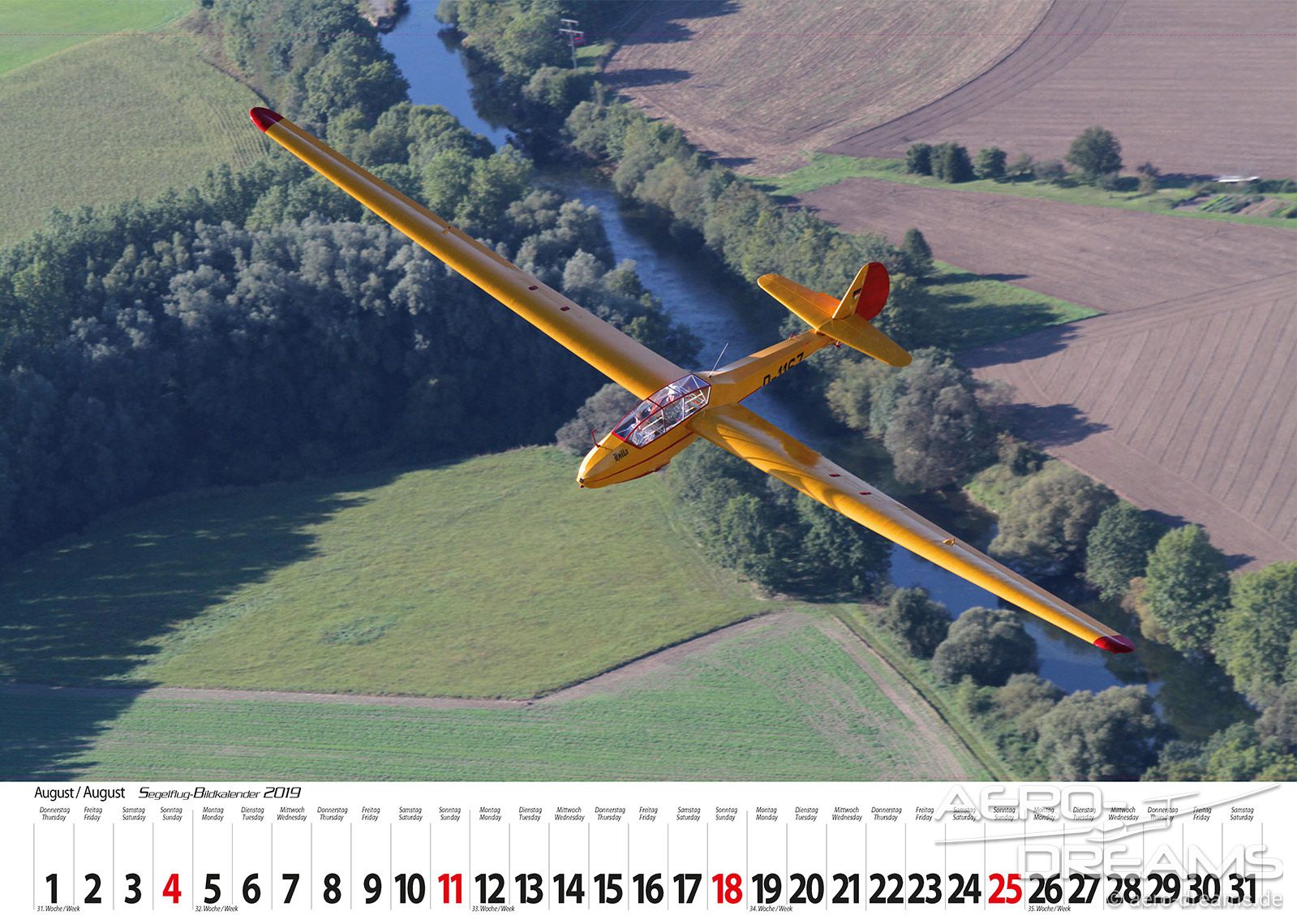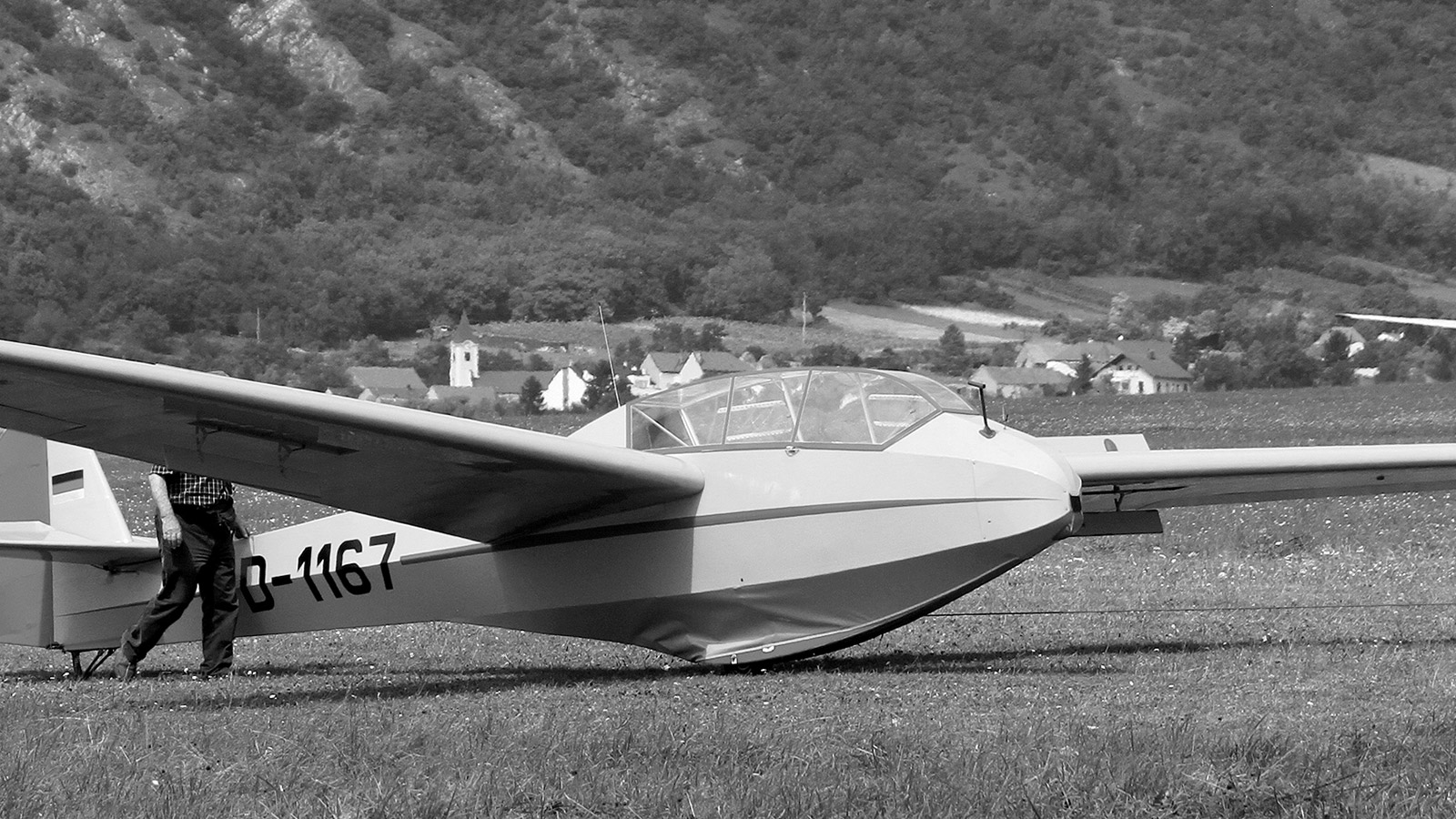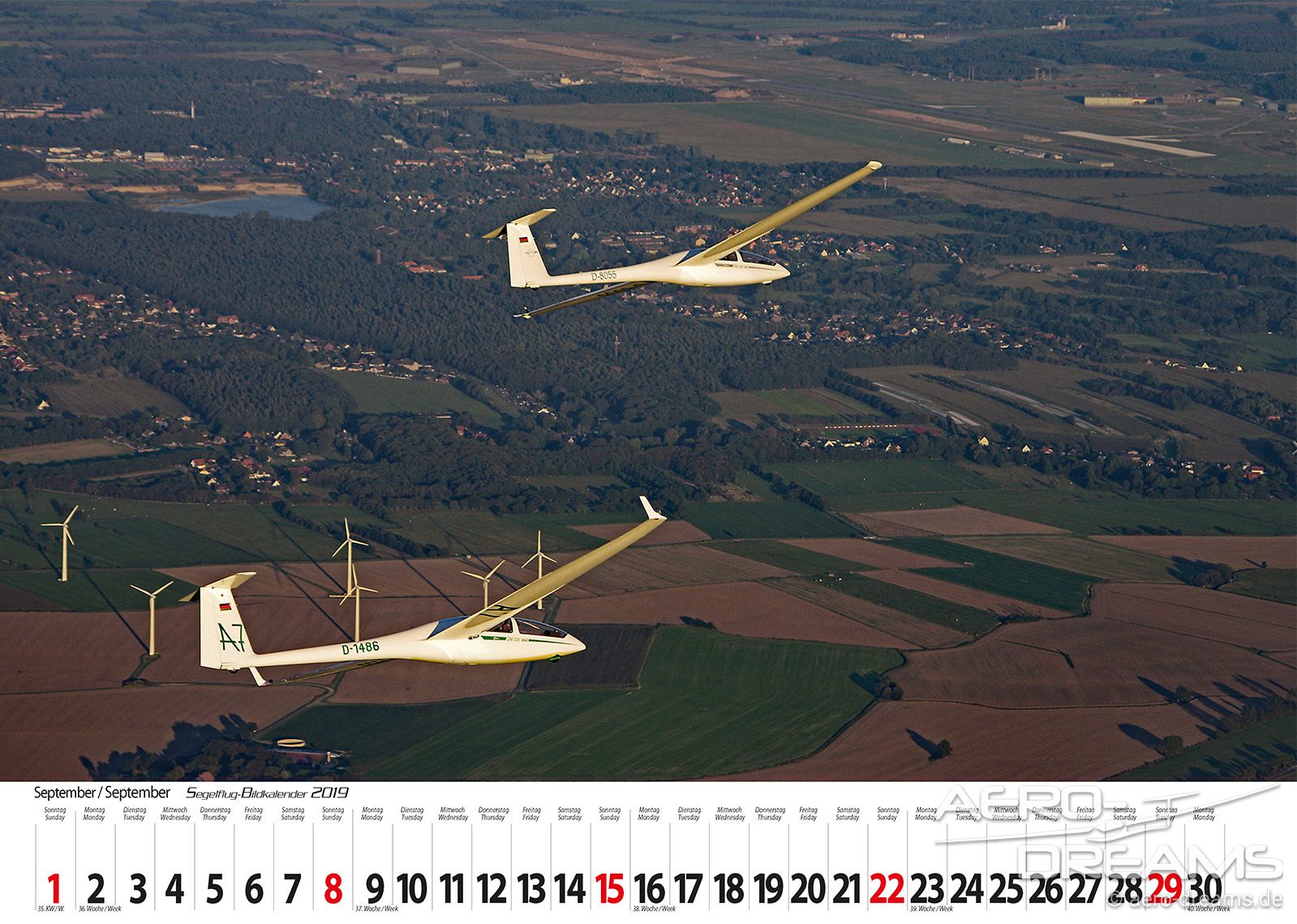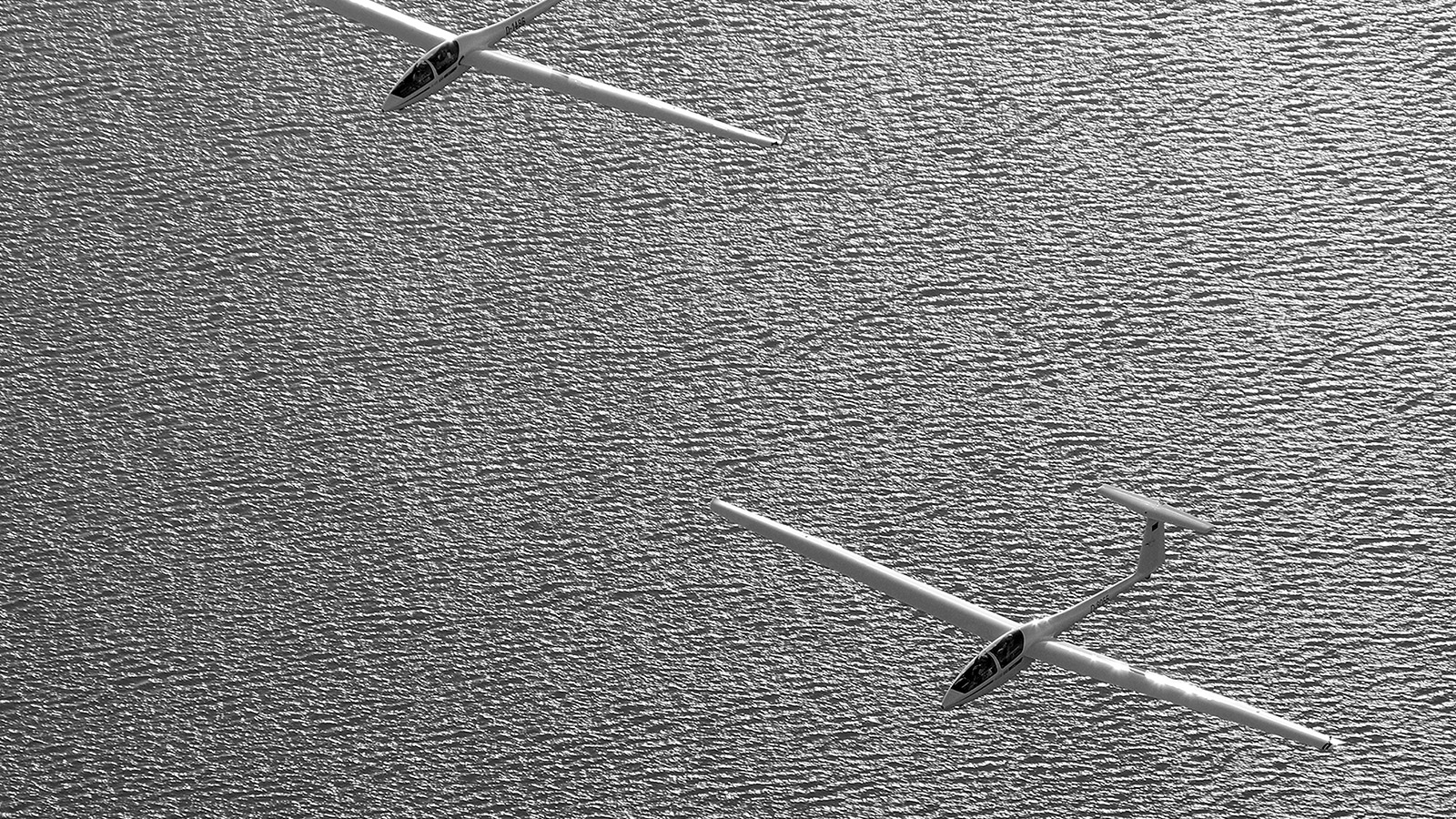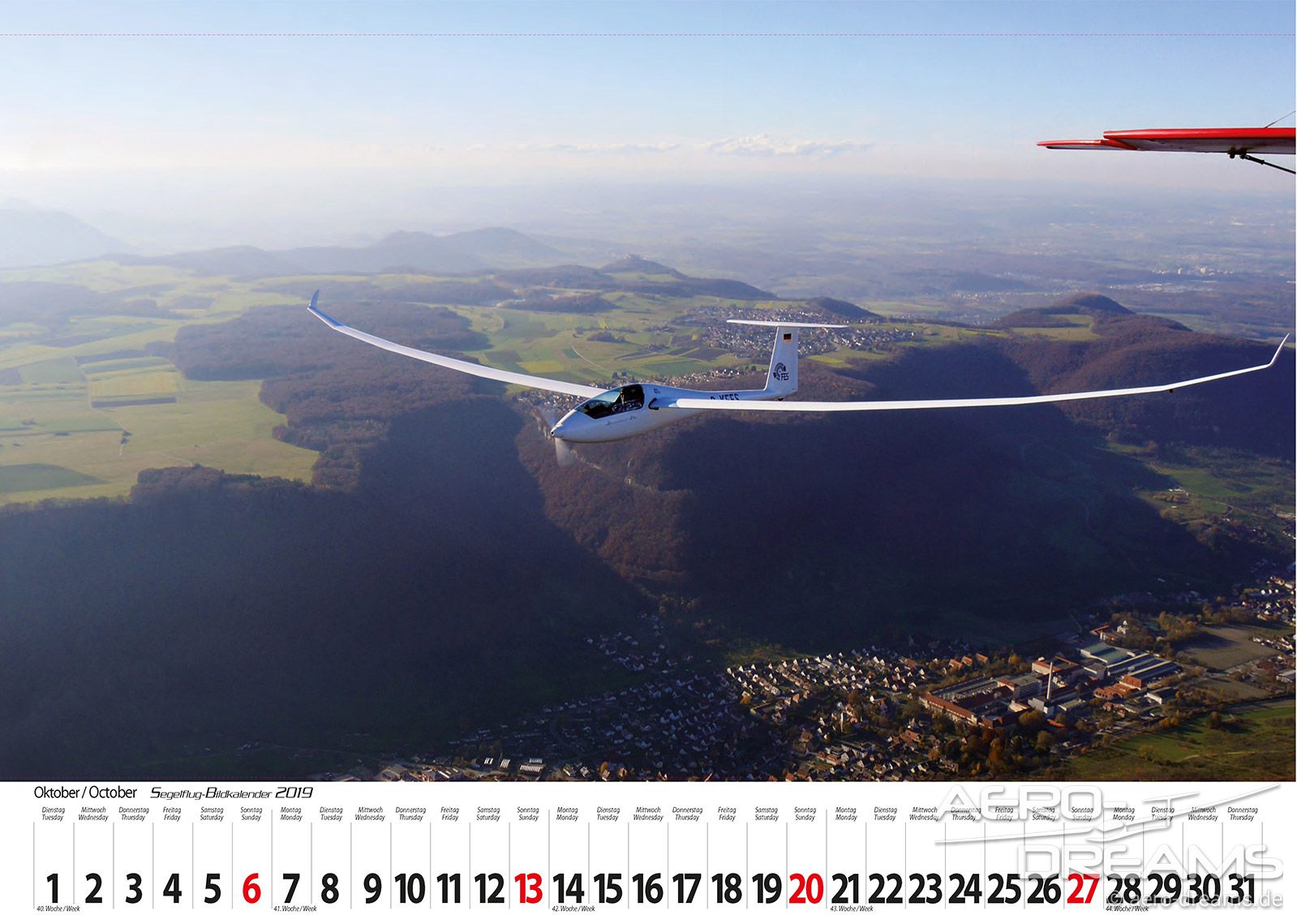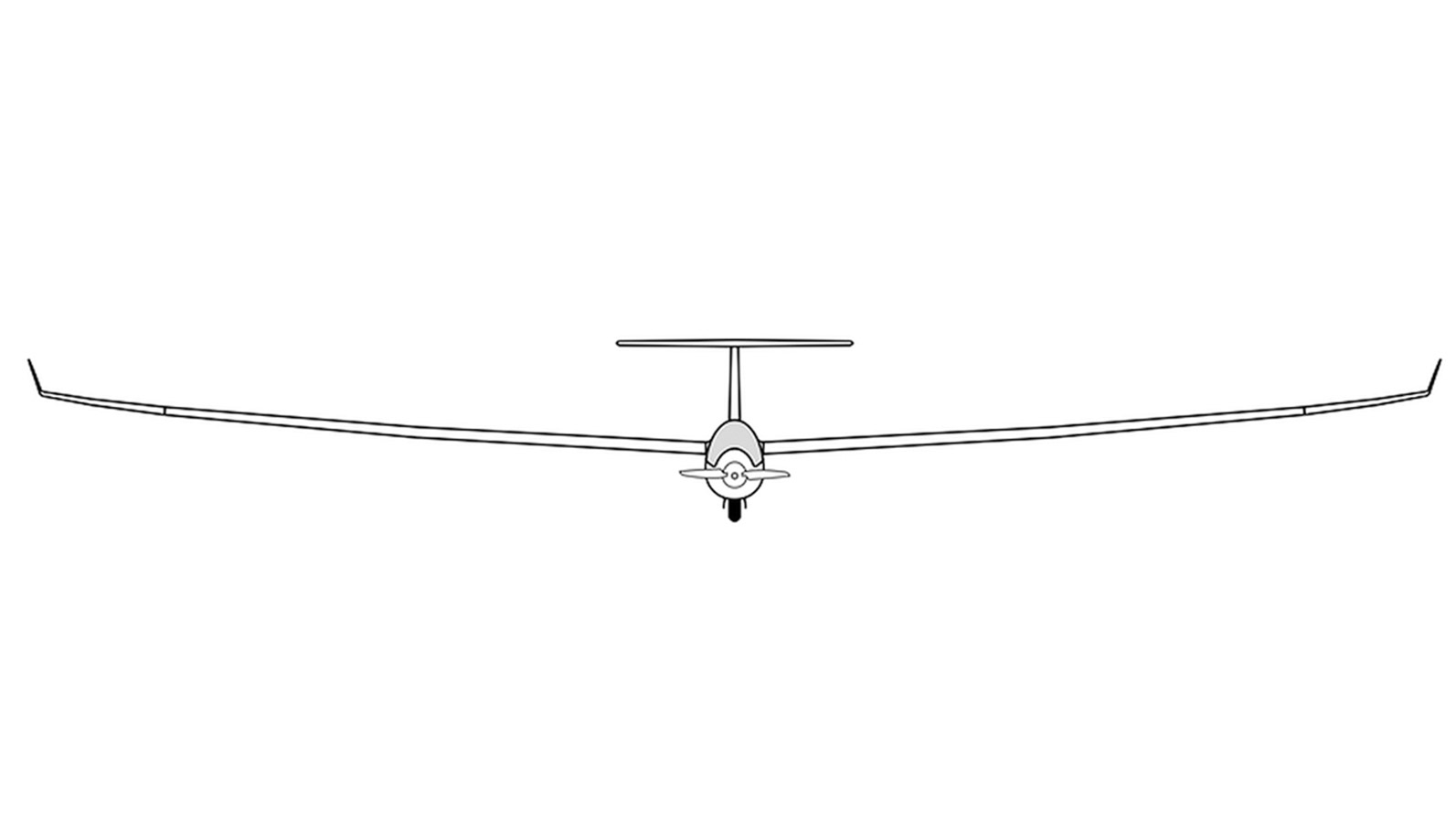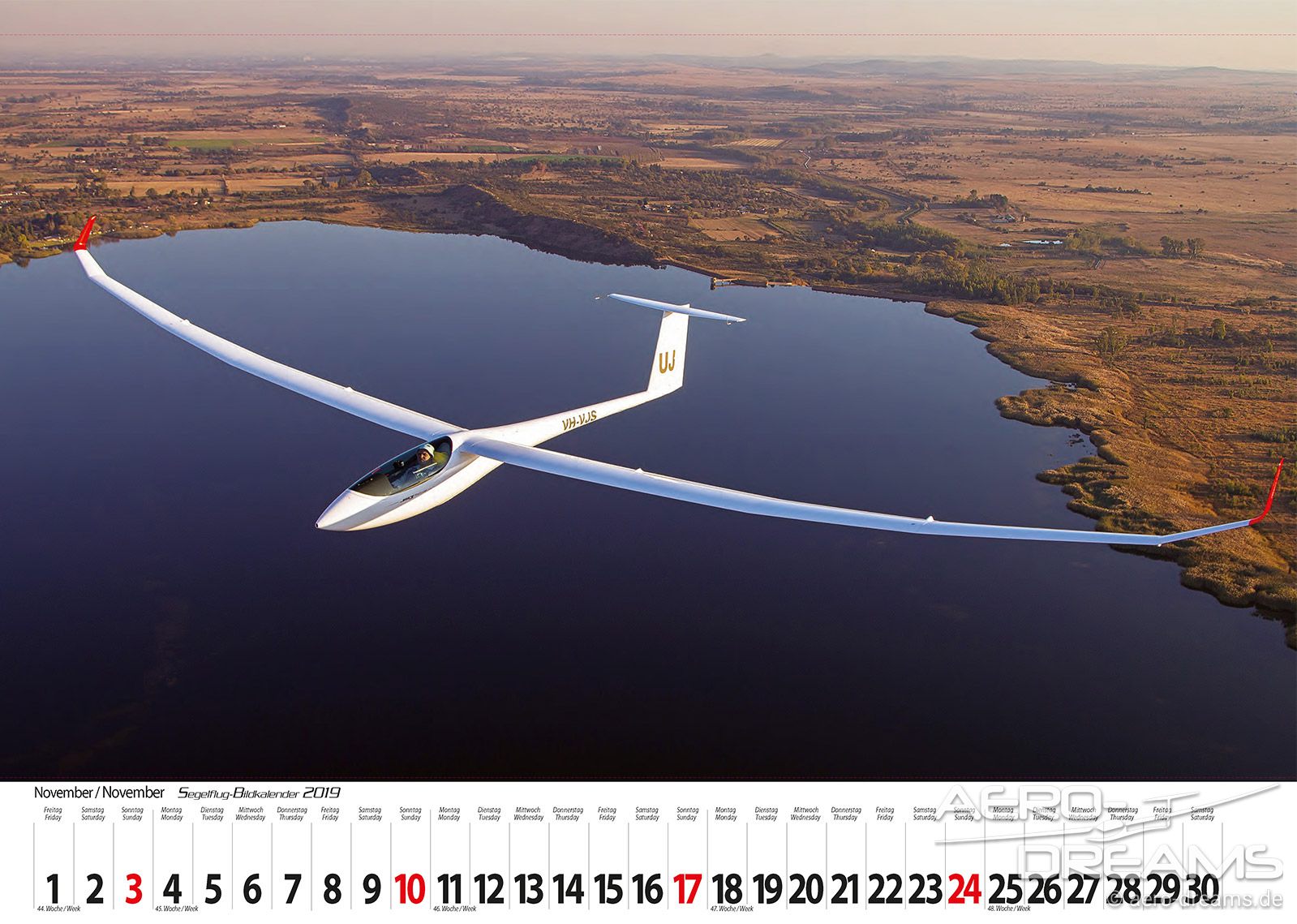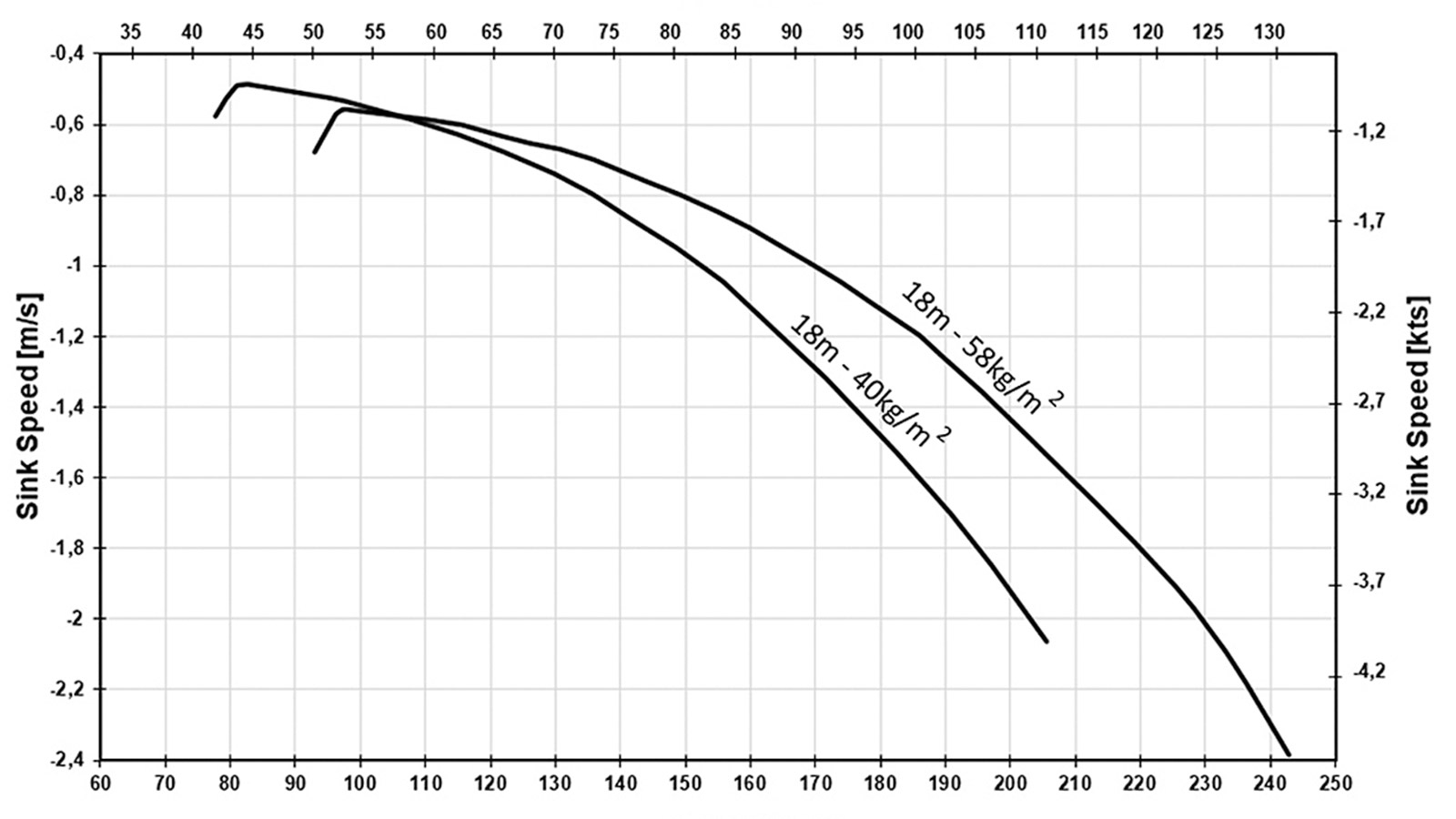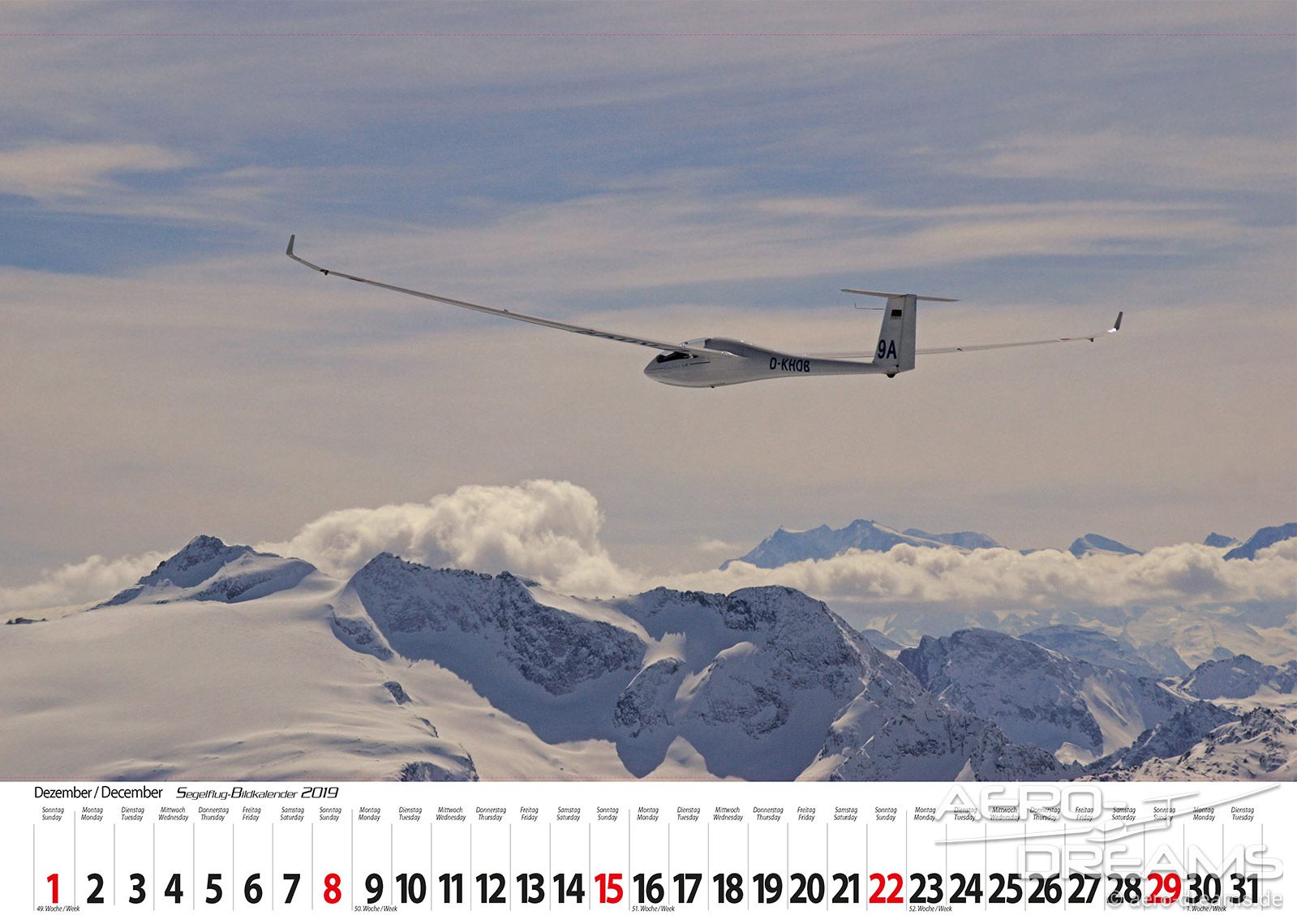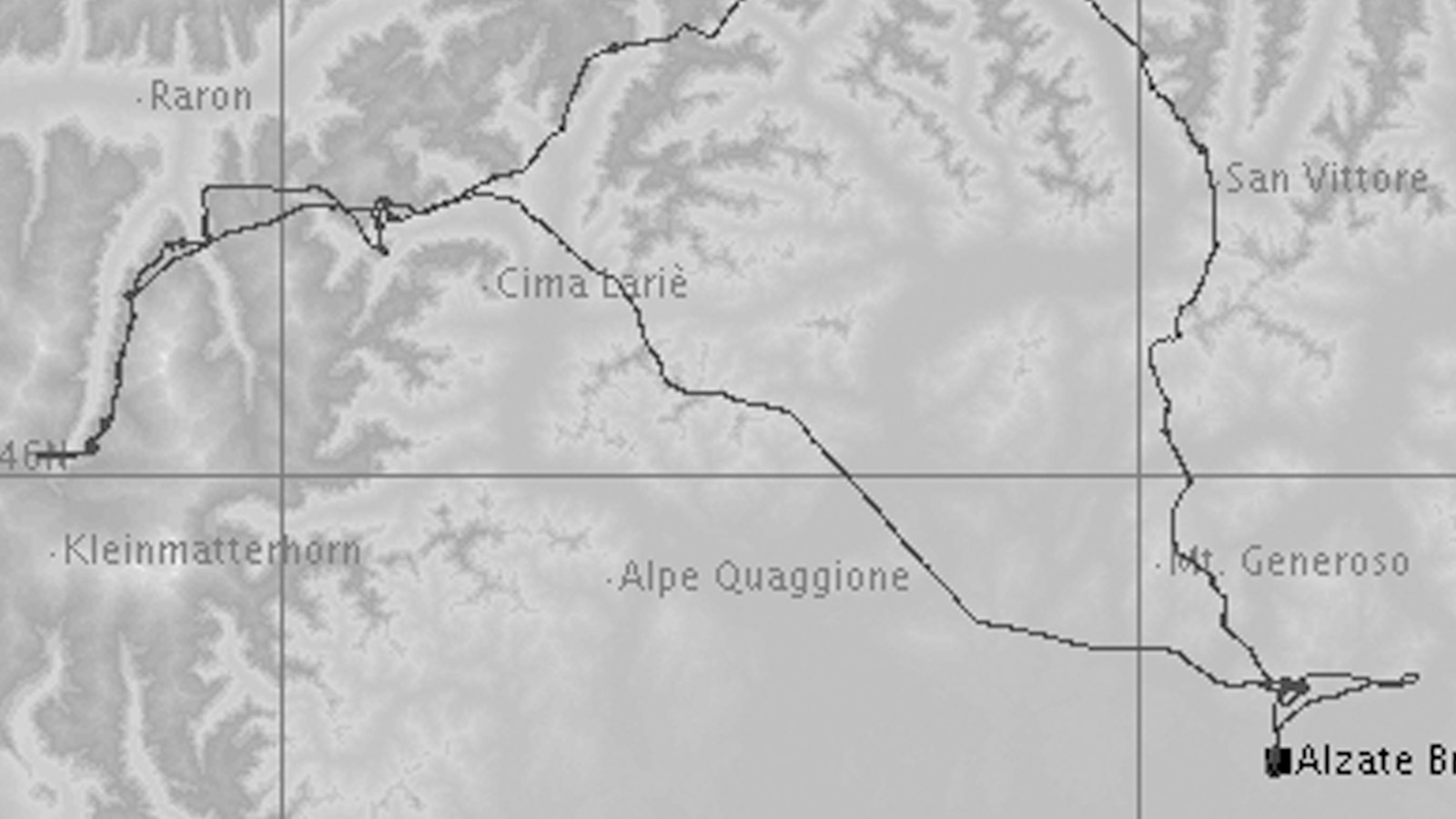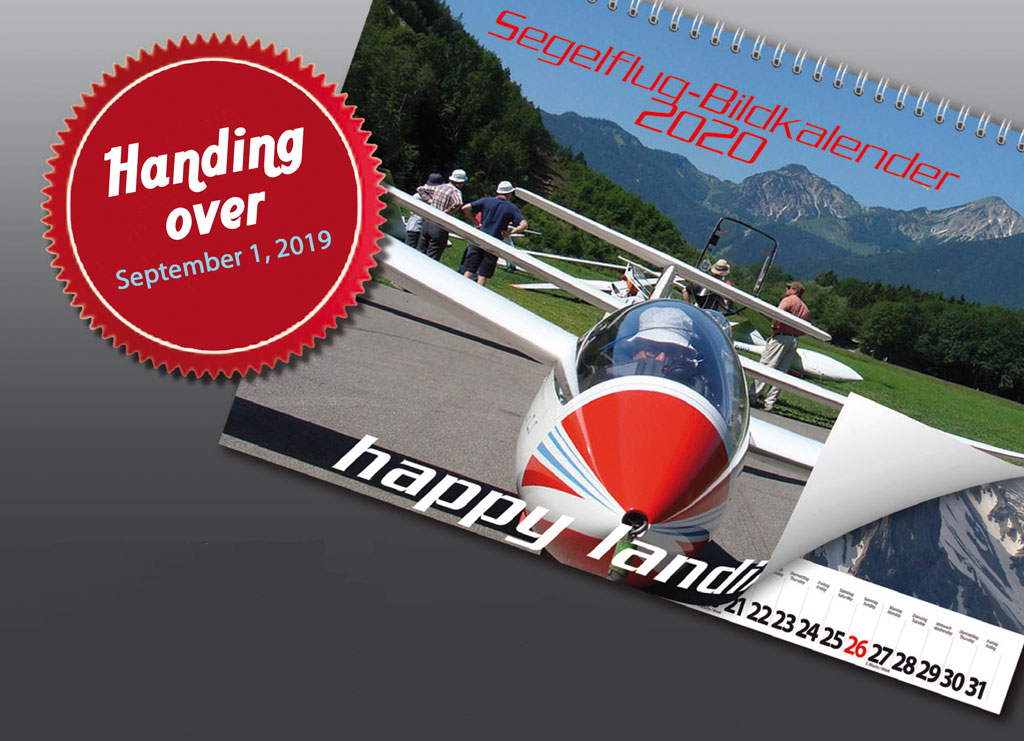50 years of our annual Soaring Calendar
The 2019 Soaring Calendar
The gliding picture calendar 2019 presents the whole world of soaring in its variety, the selection of pictures and its informative background. For 50 years now, this calendar has been the standard work among picture calendars in soaring. Freshness and attractiveness have not suffered over the many years. On the contrary: the anniversary edition convinces again with current and interesting 2-language reports and stories.
Dream it, plan it, do it
The flying experience starts with Björn. A racer for the standard class is tested in southern France. Soaring aircraft designers are a special species - we introduce them. Oldtimer fans will find the technology and history of a crane that almost reached the stratosphere in 1940. It is also exciting to see the special love between Hella, a mountain falcon 13 E, and its owner Heinz. Flying between Canada and the USA will be a tightrope walk over Niagara Falls. Accompany a JS3-18 on its maiden flight in South Africa and follow a conversation between Reiner Rose and Bernd Weber about a Discus with E-Power in its nose.


